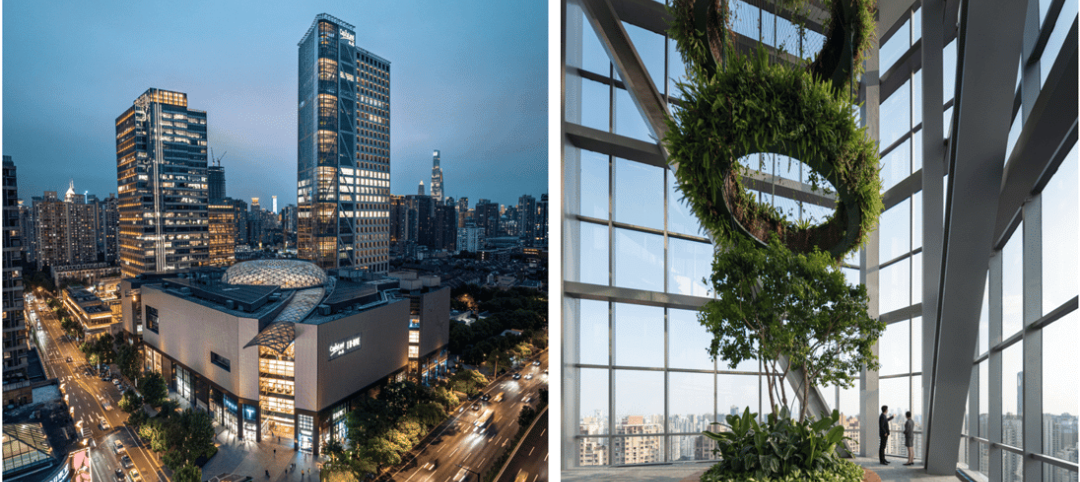November 2, 2010—Local and state building code officials last week approved a package of revisions to the commercial section of the 2012 International Energy Conservation Code (IECC) that represent the largest single- step efficiency increase in the history of the national, model energy. The changes mean that new and renovated buildings constructed in jurisdictions that follow the 2012 IECC will use 30 percent less energy than those built to current standards.
Attendees voted nearly unanimously on a series of proposals to effect the change at the International Code Council’s (ICC) final action hearings held in Charlotte, North Carolina, October 27-31, 2010. The improvements were part of a major comprehensive proposal submitted jointly by New Buildings Institute (NBI), The American Institute of Architects (AIA), and the U.S. Department of Energy (DOE) that addresses measures such as cooling, lighting, quality assurance and renewable energy standards. Several other key proposals that contribute to the savings were approved independently.
The comprehensive proposal is largely based on NBI’s Core Performance protocol, a direct approach to achieving energy savings in commercial buildings. Utilities and public benefits administrators in six states and two Canadian provinces have adopted Core Performance as part of their voluntary efficiency program offerings.
“Increasing the efficiency of commercial building energy codes provides the best opportunity to bring about significant savings and helps move us along the path toward low-energy commercial buildings,” said Dave Hewitt, NBI executive director.
“The often contentious process of developing codes was largely avoided in this case because of the extensive outreach and collaboration that was undertaken to gain industry support for the proposals. As a result, we were able to successfully resolve differences prior to the hearings and put forward our best option for consideration,” Hewitt said.
“The overwhelming support we saw during the votes tells us the marketplace is ready for these practical, feasible and affordable improvements,” said Jessyca Henderson, AIA, director of sustainability advocacy at the AIA. “The nation’s code officials are to be commended and congratulated for seizing this historic opportunity to move the country toward more efficient buildings and help us build an economy that is less reliant on fossil fuels—now and into the future,” she said.
Computer modeling of the 2012 IECC shows more than 30 percent better energy efficiency on average than the ASHRAE 90.1-2004 model code, and payback periods on the new code measures are estimated at less than seven years depending on climate and building type. The energy savings in the 2012 IECC meet national calls from Congress, the Secretary of Energy and industry leaders to improve the efficiency of commercial buildings by 30 percent. In addition, the 2012 IECC will serve as the baseline standard for the International Green Construction Code (IGCC) currently under development.
The 2012 IECC contains many important, first-ever technical features including a new section on commissioning, pathways to use daylighting, and options for the use of on-site renewable energy. It will be published in April 2011 for adoption by state and local agencies.
New Buildings Institute is a nonprofit organization working collaboratively with commercial building professionals and the energy industry to promote better energy performance in buildings, including advocating for advanced design practices, improved technologies, public policies and programs that improve energy efficiency. Visit www.newbuildings.org.
For over 150 years, members of The American Institute of Architects have worked with each other and their communities to create more valuable, healthy, secure, and sustainable buildings and cityscapes. By using sustainable design practices, materials, and techniques, AIA architects are uniquely poised to provide the leadership and guidance needed to provide solutions to address climate change. AIA architects walk the walk on sustainable design. Visit www.aia.org.
Related Stories
Geothermal Technology | Jul 29, 2024
Rochester, Minn., plans extensive geothermal network
The city of Rochester, Minn., home of the famed Mayo Clinic, is going big on geothermal networks. The city is constructing Thermal Energy Networks (TENs) that consist of ambient pipe loops connecting multiple buildings and delivering thermal heating and cooling energy via water-source heat pumps.
High-rise Construction | Jul 29, 2024
Safdie Architects’ Shanghai office tower features glass-enclosed corner garden that ascends the 35-story structure
Safdie Architects has announced the completion of LuOne Mixed-Use Complex—a business, retail, and entertainment development in the Luwan district of Shanghai, China. The mixed-use complex consists of an eight-level retail galleria, which opened in 2018, and a 35-story office tower, which recently reached completion.
Casinos | Jul 26, 2024
New luxury resort casino will be regional draw for Shreveport, Louisiana area
Live! Casino & Hotel Louisiana, the first land-based casino in the Shreveport-Bossier market, recently topped off. The $270+ project will serve as a regional destination for world-class gaming, dining, entertainment, and hotel amenities.
Smart Buildings | Jul 25, 2024
A Swiss startup devises an intelligent photovoltaic façade that tracks and moves with the sun
Zurich Soft Robotics says Solskin can reduce building energy consumption by up to 80% while producing up to 40% more electricity than comparable façade systems.
Codes and Standards | Jul 25, 2024
GSA and DOE select technologies to evaluate for commercial building decarbonization
The General Services Administration and the U.S. Department of Energy have selected 17 innovative building technologies to evaluate in real-world settings throughout GSA’s real estate portfolio.
Great Solutions | Jul 23, 2024
41 Great Solutions for architects, engineers, and contractors
AI ChatBots, ambient computing, floating MRIs, low-carbon cement, sunshine on demand, next-generation top-down construction. These and 35 other innovations make up our 2024 Great Solutions Report, which highlights fresh ideas and innovations from leading architecture, engineering, and construction firms.
Senior Living Design | Jul 23, 2024
The growing importance of cultural representation in senior living communities
Perkins Eastman architect Mwanzaa Brown reflects on the ties between architecture, interior design, and the history and heritage of a senior living community’s population.
MFPRO+ News | Jul 22, 2024
Miami luxury condominium tower will have more than 50,000 sf of amenities
Continuum Club & Residences, a new 32-story luxury condominium tower in the coveted North Bay Village of Miami will feature more than 50,000 sf of indoor and outdoor amenities. The program includes a waterfront restaurant, dining terraces with resident privileges, and a private dining room outdoor pavilion.
Healthcare Facilities | Jul 22, 2024
5 healthcare building sector trends for 2024-2025
Interactive patient care systems and trauma-informed design are among two emerging trends in the U.S. healthcare building sector, according to BD+C's 2024 Healthcare Annual Report (free download; short registration required).
MFPRO+ News | Jul 22, 2024
6 multifamily WAFX 2024 Prize winners
Over 30 projects tackling global challenges such as climate change, public health, and social inequality have been named winners of the World Architecture Festival’s WAFX Awards.
















